
Vauxhall Corsa-e Review

Introduction
As we move, seemingly inexorably towards an electric future, Vauxhall has taken all the sensible bits of the Corsa and replaced the gas-guzzling (although really rather frugal) petrol and diesel engines and replaced them with the electric motor and battery pack from its cousins, the Peugeot e-208 and Citroen e-C4.
That means there’s just one option for your power (a 136hp electric motor) and just one battery pack size - a 50kWh unit that’s good for 209 miles of range) but everything else is as Corsa as a Corsa gets.
Review Sections
Select's rating score* - 3.7 / 5
At a Glance
Despite having just one fixed platform, with the 136hp electric motor and 209 miles of range from the battery pack, the rest of the Corsa-e is much the same as the regular Corsa model.
That means you’ve got cheaper entry-level models, good value mid-range models, and somewhat expensive top of the range models, all offering much the same as all of its rivals.
It drives quite nicely, is reasonably spacious and comfortable enough for most, but lacks the sparkle and excitement you might get from more stylish rivals - including its Peugeot e-208 sibling - but that’s exactly what many people want from a car. We’re not all enthusiasts after the latest cutting-edge design; some of us just want to go to work and back without thinking too hard, which is where the Corsa performs so well.
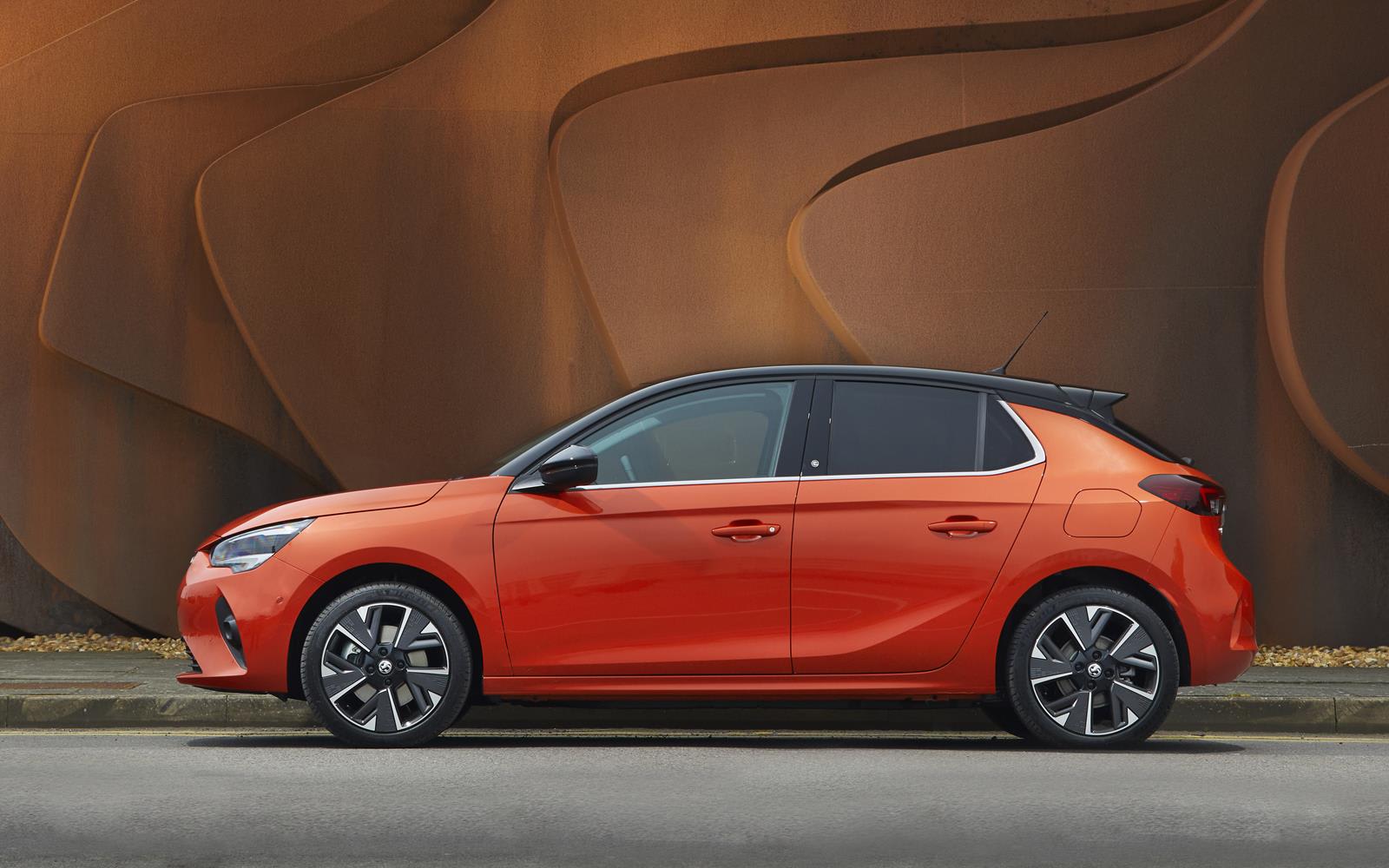
Key Features
The stand-out feature of the Corsa-e is that it doesn’t stand out - it’s a Vauxhall Corsa that just happens to have an electric motor.
This should appeal to those customers that like to play it safe, and ease them into electric car ownership gently.
It also means that all the upsides of Corsa ownership - a spacious and practical cabin, an easy to use dashboard, and dealers on every corner - are maintained, with the benefit of lower running costs and pleasant near-silent driving.
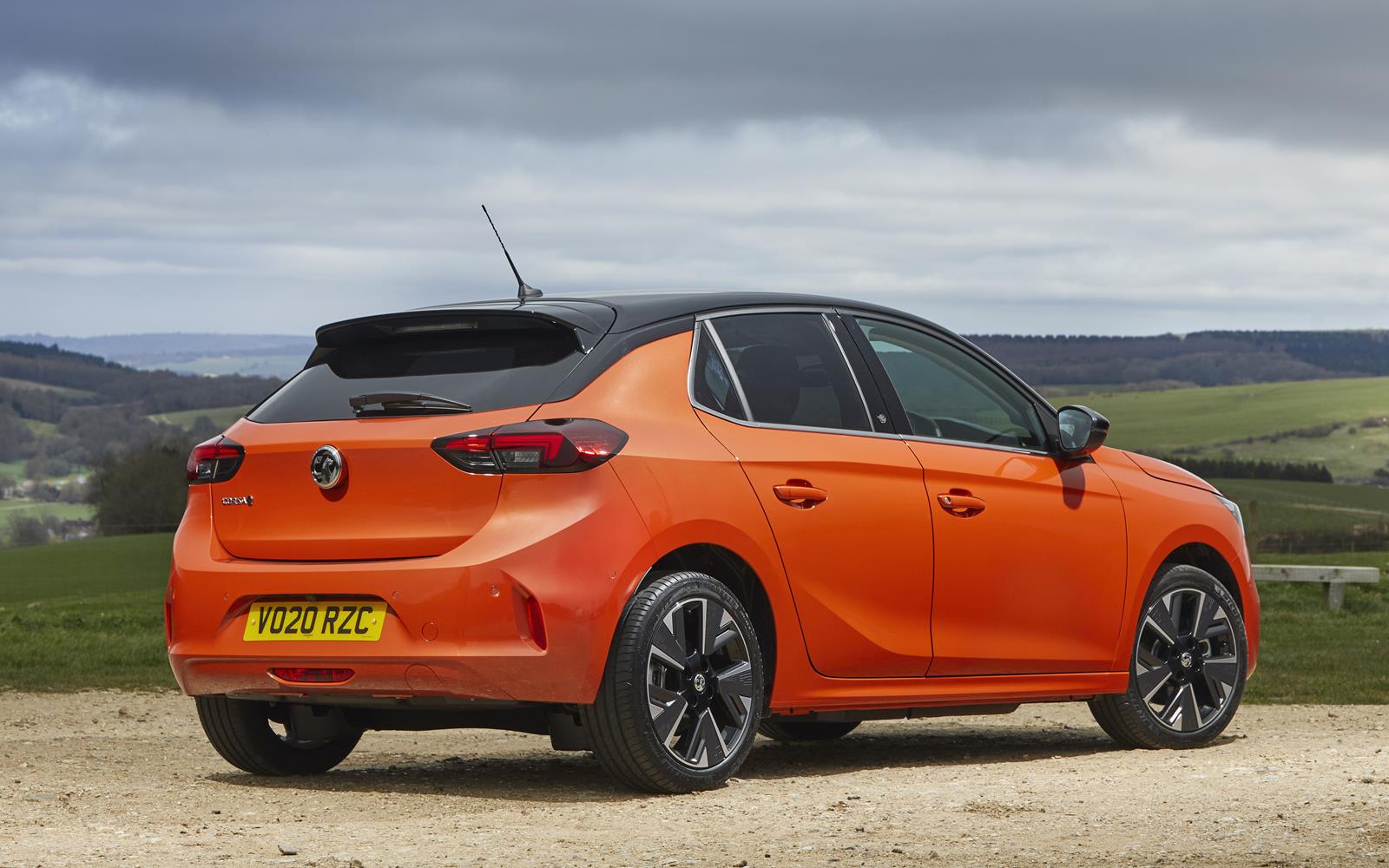
It also means you take on the same downsides, which is a somewhat dour design and a warranty package that falls short of its rivals, but those on a leasing deal are unlikely to reach the end of the three years of cover. The warranty can be extended, of course, if necessary.
Performance and Drive
There is no high-performance VXR model to excite you, so you’re stuck with the same electric motor regardless of what model you choose. That’s got 136hp which is enough to propel the Corsa-e to 62mph in 7.6 seconds.
Like almost every electric car, it’s the first half of that sprint that is the fun part, with the Corsa-e scampering off the line with an urgency that belies its family-friendly hatchback status. Keep pushing and the rate of acceleration slows, with the car giving up entirely at 93mph.
An eco mode keeps power demands in check, slowing progress a little by limiting output to 82hp but allowing the car to travel further, while regenerative braking recovers some of the energy lost in braking to charge the battery pack. That also means that you end up relying on the regen system to slow down rather than the brakes, which makes driving more relaxing and, ultimately, saves a bit of money.
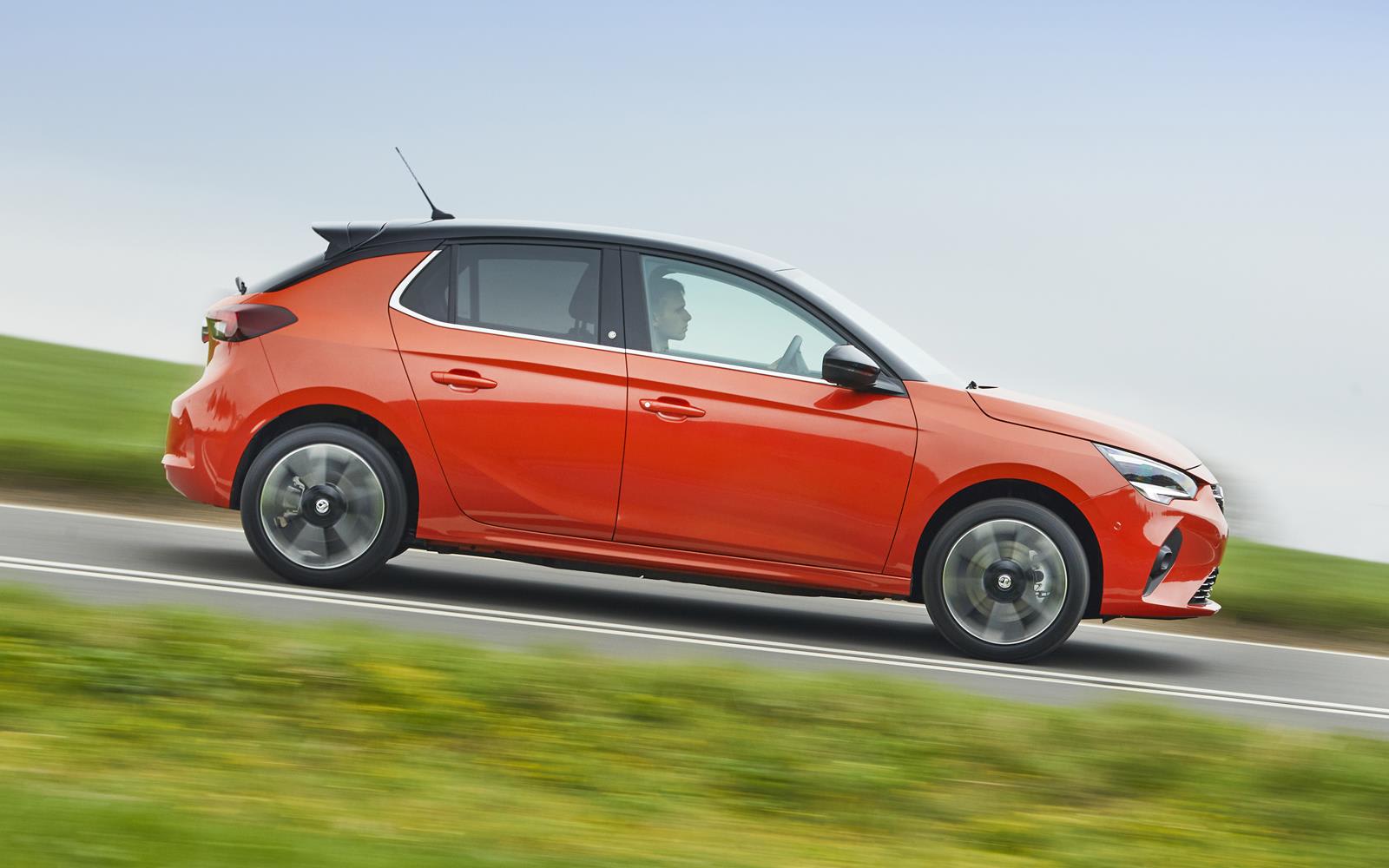
Sport mode releases all 136hp at once, but you’ll never get particularly excited by the performance. Once you’ve hit 40mph or so, it’s rather pedestrian with overtaking moves needing careful planning.
Cruise along and it’s nicely weighted, with the low-slung battery pack providing a solid, stable sensation. Body roll that’s kept in check nicely suggests you might even be able to have some fun, but there’s no engagement. You drive, brake, turn, drive, repeat, with nothing to encourage you to ex[lore the dynamic capabilities of the car.
Of course, it’s a compact hatchback with an eco-friendly drivetrain, so rally-style cross-country runs aren’t really what it’s all about.
Running costs
A week with the Corsa-e suggests that electricity costs might be rather more than anticipated. While there’s a 209-mile range promised by official test results, the car’s trip computer never reported more than 180 miles being available. Even that was enormously optimistic, as the Corsa-e’s range estimates were a massive 56% over the real-world range available.
You might be thinking of the 15p per kWh electricity you get at home and thinking it’ll be a cheap car to run, but head further afield and you’ll be unexpectedly needing to charge up at prices up to five times that. Find nothing but an Ionity charger and it would be cheaper to have filled up with petrol.
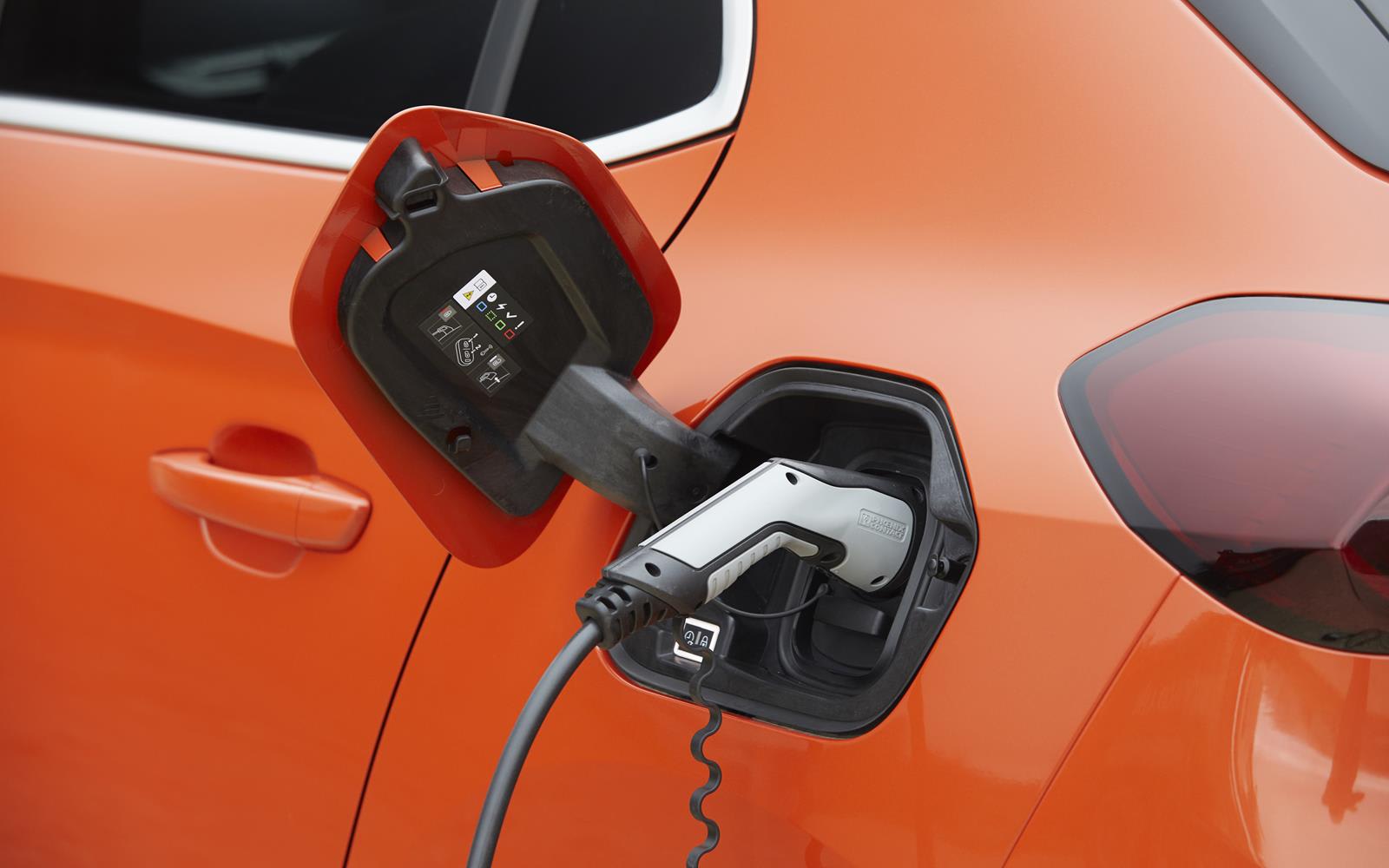
Range anxiety is a real thing and if the onboard computer can’t get to grips with the basics, it undermines confidence in the car. A 10%, maybe even 15%, margin of error is one thing, but 56%? That’s not acceptable and was similar to the over-egged claims of the same computer system made in the Peugeot e-208.
That aside, the addition of the letter ‘e’ to the Corsa’s name adds around £7,000 to the list price of the car, once government grants have been taken into account, although leasing rates are broadly similar between the models. For once then, there’s no penalty for picking the eco option.
Company car users will also benefit from low tax rates, with a BIK rate of just 1%, while every user avoids a road tax bill. Congestion charges can be avoided, too, while many towns and cities even offer free parking.
Interior
Apart from the lack of engine noise, you’d be hard pushed to tell the difference between the electric Corsa-e and any other regular Corsa model.
Exciting design flourishes have been banned, with the cabin being conventional to a point where even John Major might get a bit bored by it all. However, while it’s dull enough to put ditchwater out of a job, it’s impressively usable. Perhaps there’s something in simple design, after all.
The infotainment system - with a large 10.0-inch touchscreen on this top-spec Elite Nav model - is simple enough to operate, and comes with all the kit you would normally expect. There's a DAB radio, Bluetooth connectivity, Android Auto and Apple CarPlay, as well as navigation covering all of Europe.

Pleasingly, there’s a physical volume control knob underneath the screen, while the climate control system has some rotary dials situated further down. That gets an immediate thumbs-up as, while it doesn’t look as cool as a high-tech digital dashboard, it’s so much easier to use when driving along the M11.
However, the digital instrument panel the driver gets on this Elite model doesn’t work at all. It’s a 7.0-inch screen that sits where the traditional speedo and rev counter would normally go, looking like an aftermarket afterthought that’s far less intuitive to use. The lower-spec models on petrol-powered cars do it better with their regular analogue dials.
Technology
It’s the battery technology that will get people talking, from those who are insistent that range anxiety leaves EVs as a dead end, while others will embrace the tech and want to know more.
The basics are simple enough; there’s a 50kWh battery pack under the floor and a 136hp electric motor under the bonnet. Charging can be carried out using a simple three-pin plug socket, but this will take some time - from empty to full, you’ll need 24 hours to top it all the way up.
Opt for a home charger unit, which is simple enough to fit and costs just a few hundred pounds, and that time will be reduced to seven and a half hours Of course, you’ll rarely be empty, so leaving it plugged in while you’re sleeping will ensure there’s always full tank in the morning.
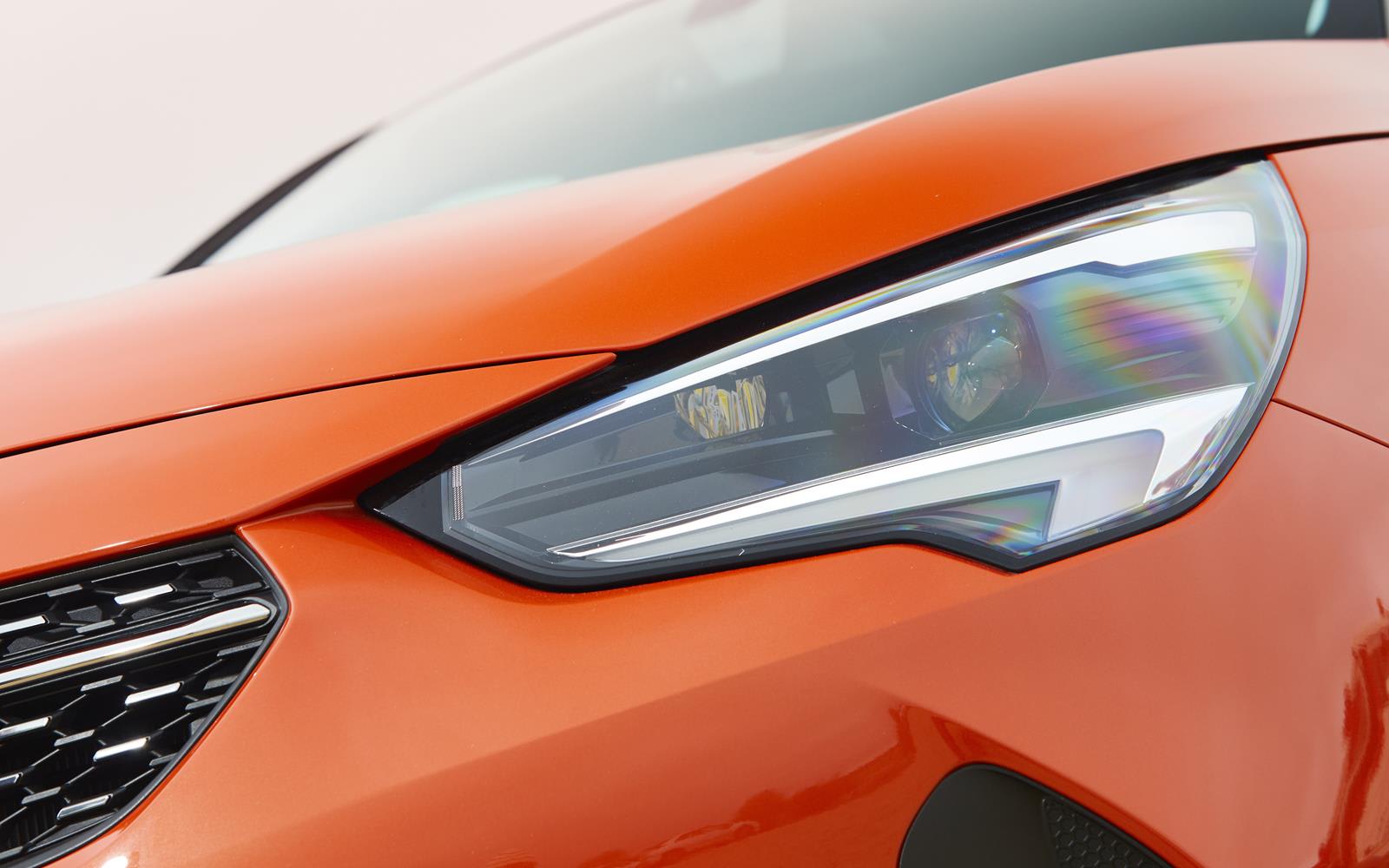
You can choose two charger options in the car - a 7.4kW unit or an 11kW unit. These figures don’t ever seem to relate to anything specific, but it means that the standard charging socket on the car can accept faster charge rates, allowing mid-speed charging at public chargers that see a 15-80% charge time drop down to just over three hours. Without the upgrade, that’s limited to the same speed as your home charger.
Finally, there’s rapid charging available at suitably equipped public chargers, dropping the 15-80% charging time to as little as 30 minutes.
The various options sound complex, but it’s all rather easy. Thanks to the so-called Type 2 socket, every Corsa-e will plug into the vast majority of chargers, taking five hours to charge from a 15% battery level to 80% charge. An extra CCS socket improves that to as little as 30 minutes, but there are fewer of those chargers out and about on the road network.
Practicality & Boot Space
The cabin is a decent size, with plenty of room in the front and, once you’ve got through the rather compact doors, enough room in the rear for most. It’s certainly more spacious than some rivals, but the Volkswagen Polo will still feel more accommodating.
That’s partly down to the width of the Corsa-e. It feels narrow, even if a tape measure shows it not to be significantly smaller, and the steeply raked windscreen feels like it cuts into the cabin a little more than you’d like.
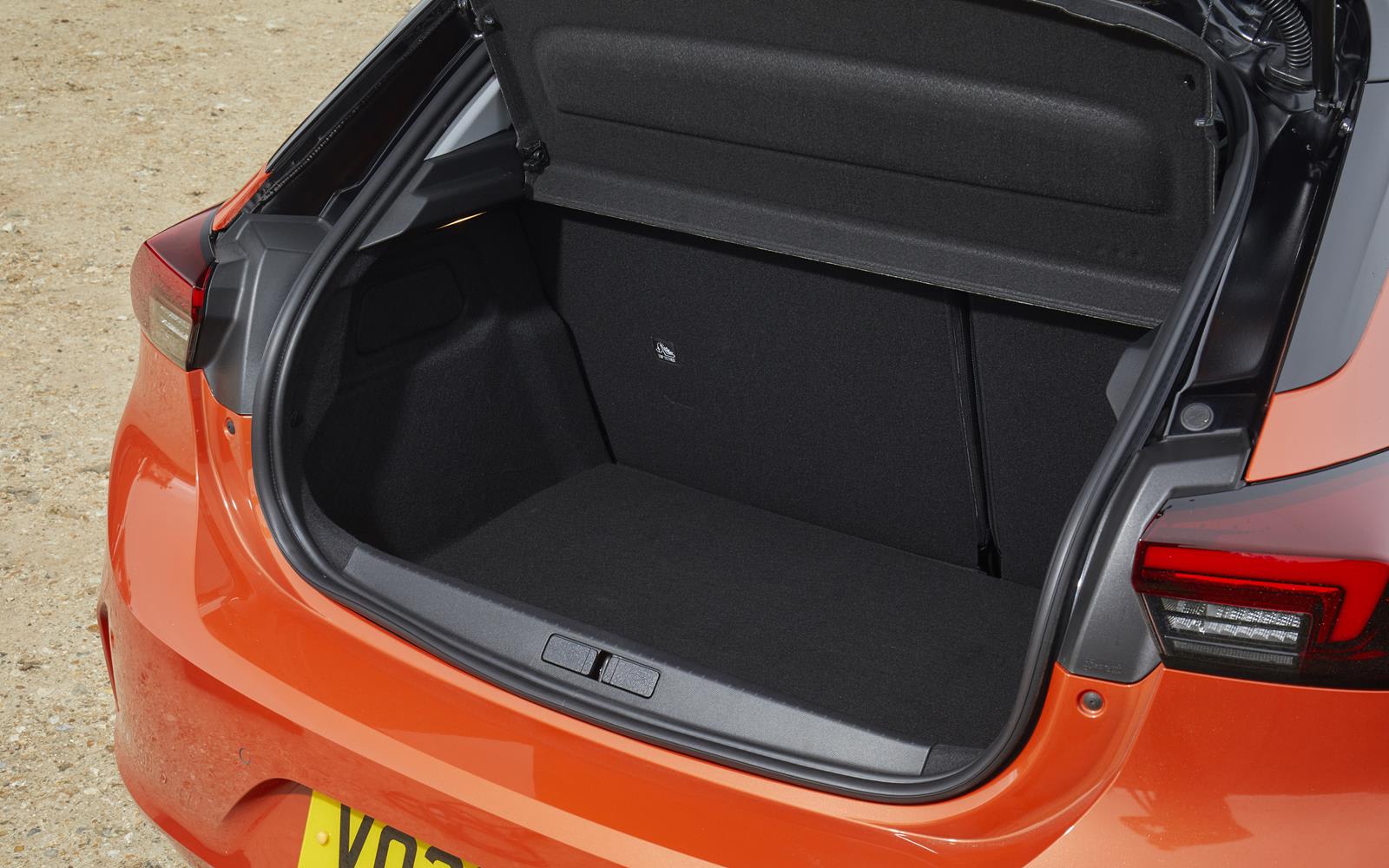
Still, it’ll happily accommodate four adults in comfort, and there are enough cubby holes and pockets around the cabin to keep their phones, iPads and drinks safely secured.
The boot is compact, with the 267 litres of space being 42 litres down on the regular model thanks to the battery pack taking up some space under the floor. Fold the seats down and load the car to the roof and that space extends to 1,081 litres. A Ford Fiesta, for comparison, offers 311 litres of cargo capacity, extending to 1,093 litres when fully loaded, so the Corsa-e is competitive.
Safety
Vauxhall has ensured the Corsa-e is well endowed with safety gear, with every model receiving a comprehensive list of electronic aids to keep you on the road. Chief amongst those is automatic emergency braking that will apply the brakes (sometimes very hard!) if you’ve been distracted and not spotted a stationary vehicle ahead.
You’ll also find lane departure warning and assist, a system to check for driver drowsiness, and traffic sign recognition.
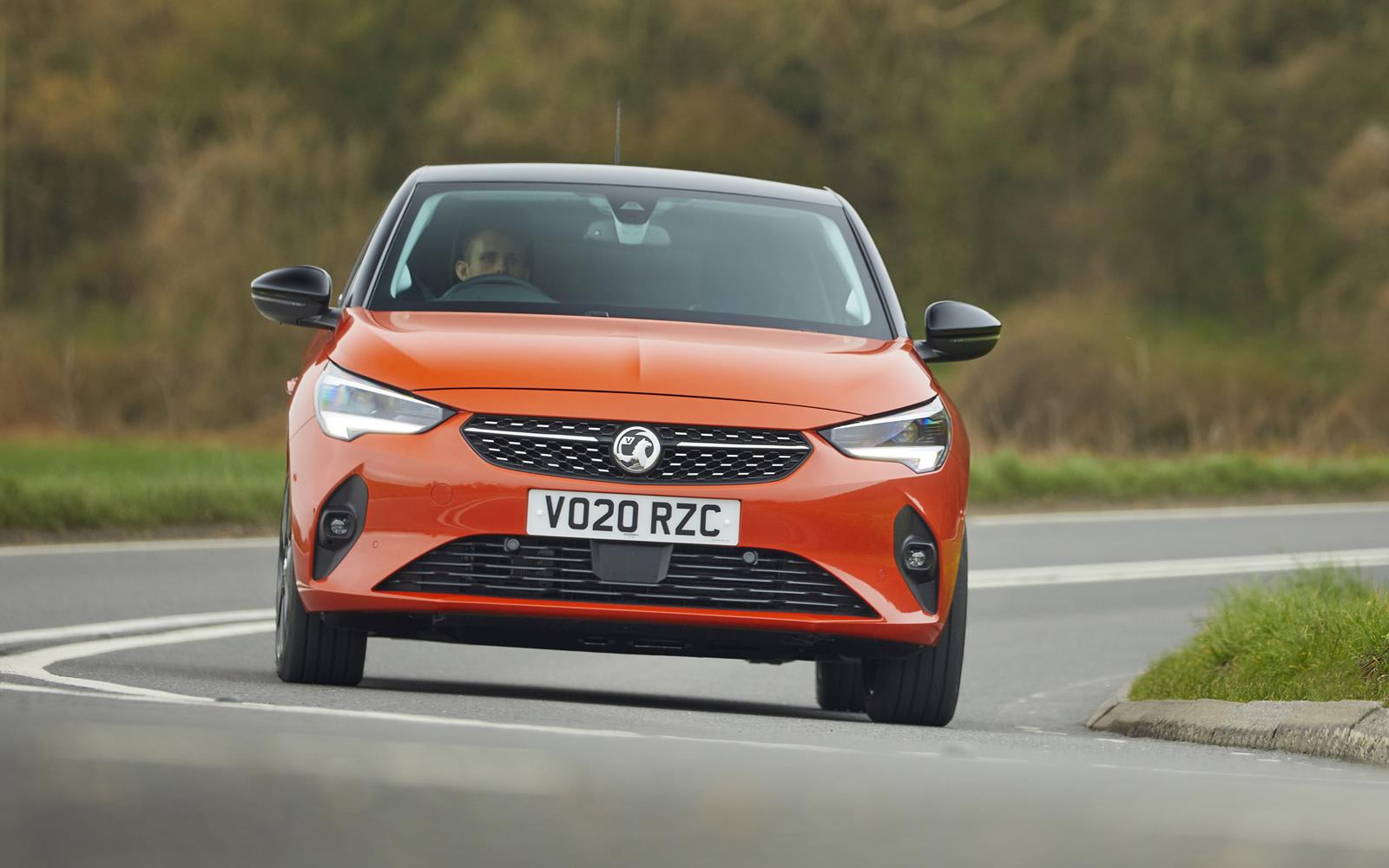
Euro NCAP hasn’t tested the Corsa-e specifically, but the petrol-engined model has been through its testing programme where it scored four stars out of a possible five. There’s no reason to think the battery-powered model will perform any differently, with the car losing a mark for poor whiplash protection. The car was also marked down slightly as the rear centre seat didn’t have a headrest, but UK models have one fitted.
Options
Vauxhall is keen to have buyers think of the Corsa-e as just another Corsa, so there’s no special edition model or bright-blue coloured option that shouts about its eco-credentials. Instead, you can choose from the usual range of SE, SRi and Elite specifications, although all have the word Premium added on to the end to highlight a small increase in specification.
It’s worth noting that there’s no ‘entry-level’ model, so the SE gets a decent level of equipment, with a 7.0-inch infotainment centre with DAB radio, Android Auto and Apple CarPlay, and European navigation included. There’s also climate control, LED headlights, keyless entry and start, and a host of safety kit included.
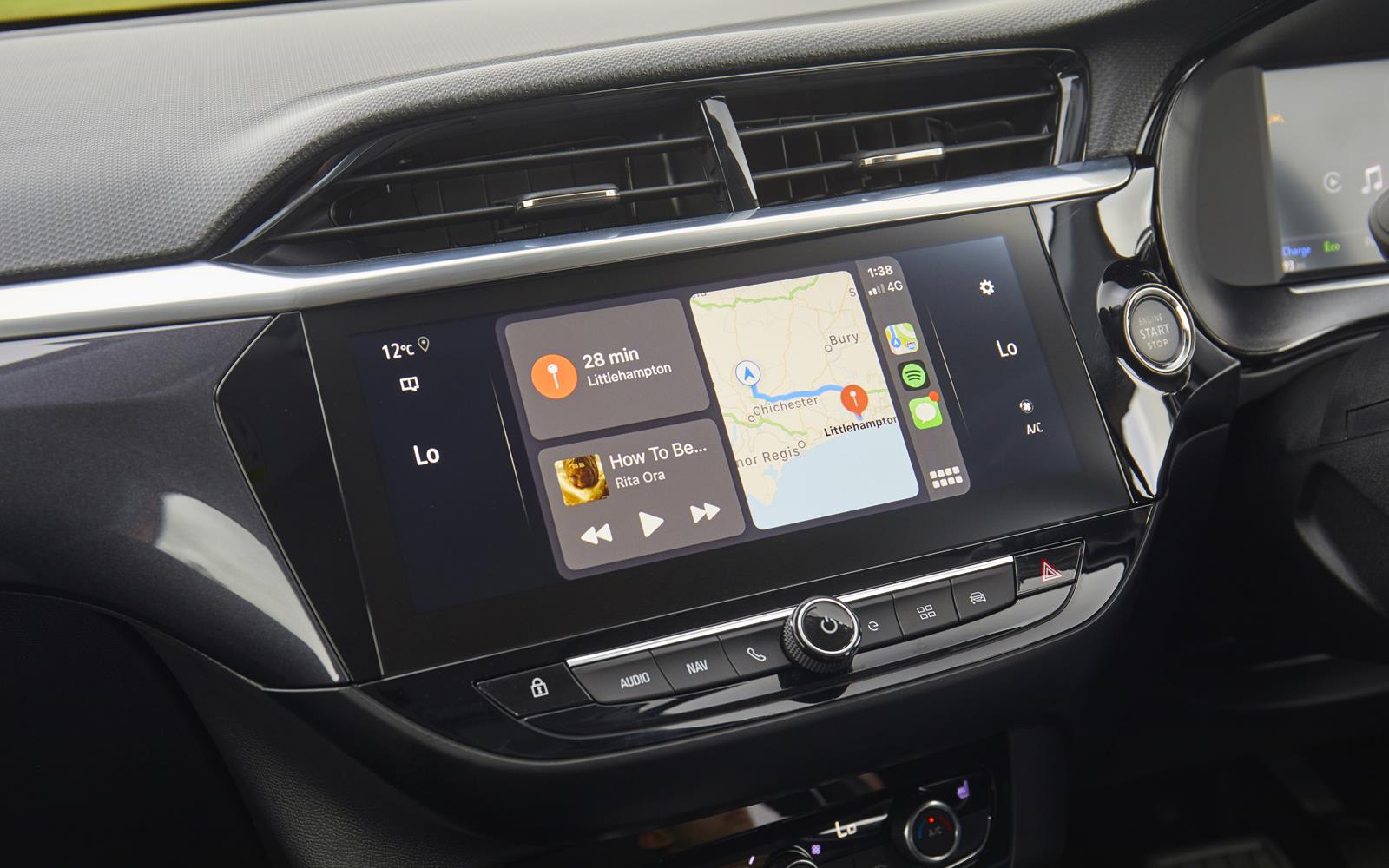
The SRi is much the same, but with sporty design touches and larger wheels, while the Elite model adds a larger infotainment screen, a reversing camera and spectacular anti-glare LED headlights.
The only option to choose, beyond the colour, is whether to have a panoramic glass sunroof. This is available on all models for £500.
Rival cars
The Peugeot e-208 has been mentioned repeatedly in the text above so you’ll already know it’s mechanically all but identical, with the same motor, battery pack and chassis. Its design is more exciting though, and the interior holds more interest. Is it better? No, it’s virtually identical in every measurable way.
Renault’s Zoe is, however, better in some areas, not least the electric range available. It’ll cover 250 miles between charges, according to official testing, which adds some useful practicality. The ride quality is quite firm though, which makes urban driving a little tedious at times.
Ride quality on the BMW i3 is even firmer, thanks to some special wheels that are tall and thin. These improve efficiency, and look great, but unsettles the car. Range is limited to 186 miles, due to a smaller battery pack, but a punchy motor and, even after eight years on sale, futuristic looks still keeps it feeling funky.
Verdict and next steps
With little to choose from in terms of monthly payments between the usual petrol-powered models and this tax-efficient electric model, the voice of power will come down to your own needs. However, smaller cars tend to cover fewer miles, which tips the balance in favour of electric power.
And there’s little reason not to pick the Corsa-e. It’s a fine, capable and good value car, but it lacks any pizzaz. You’ll admire its Germanic efficiency, but won’t be dreaming of its French fashion or Spanish zestiness.
And if you do dream of a more stylish form to go with the function, the Peugeot e-208 exists. Both vehicles are winners though, and the Vauxhall’s accessible simplicity might be just what’s needed in an ever more complex world.
Where to next?
View latest Vauxhall Corsa-e leasing deals- guide price from £202.25 per month inc VAT**
Looking for a great leasing deal? Check out our incredible range of car lease deals
New electric hatchback? Read our latest Car Reviews and find the right model for you
Want to know more about leasing? Take a look at our comprehensive Leasing Guides
Interested in everything motoring? Why not catch up on all the latest Car Leasing News.
*Score based on Select’s unique meta score analysis, taking into account the UK’s top five leading independent car website reviews of the Vauxhall Corsa-e
**Correct as of 23/04/2021. Based on 9 months initial payment, 5,000 miles over a 48 month lease. Initial payment equivalent to 9 monthly payments or £1820.23 Ts and Cs apply. Credit is subject to status.


















